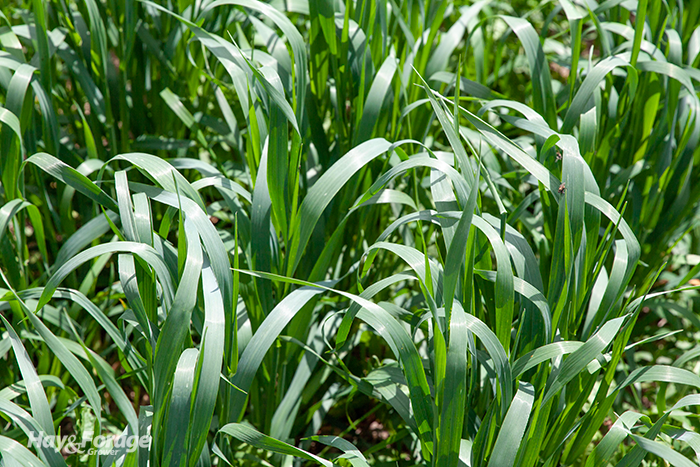
In 1930, there were nearly 40 million acres of oats harvested for grain in the United States. By contrast, USDA pegged harvested oat acres at about 900,000 in 2024; it’s become the rotary phone of crop species.
We'll never reach that 40 million acres mark again, but oats have found a new niche as a relatively high-quality, high-yielding fall forage crop in the eastern United States.
What is most impressive about fall-grown oats is its harvest versatility. Chopping for oatlage, baleage, or grazing are all viable options. Dry baling is also possible with favorable weather, but more often than not, trying to get the crop dried down during the cool fall temperatures is challenging.
A unique forage
Don't think of late summer-sown oats in the same way you think of spring-sown oats. They're two different forages when cut near the boot or early heading stages. Whereas spring-sown oats begin under cool conditions and finish under warm temperatures, it's just the opposite for late summer-sown oats.
Oats harvested or grazed in the fall have significantly lower fiber levels, higher amounts of water-soluble sugars, and a much higher level of total digestible nutrients than spring-sown oats. Harvest timing is based on how the forage will be used. If being fed to lactating dairy cows, harvest in the early “boot” stage before seedhead emergence. If the oats will be used for heifers or beef animals, waiting until after seedhead emergence will offer additional yield but slightly lower quality.
In the Midwest, planting a late-maturity oat variety in early August and harvesting about 60 to 70 days later can yield 2 or more tons of dry matter per acre. Studies in Ohio and Wisconsin showed that yields drop off significantly when oats are planted after the end of August, although grazing the crop may still be an option. Moving south, oats can be planted progressively later.
Plant fall oats at about 90 to 100 pounds per acre. Some farmers choose to save money and use bin-run seed from a previous homegrown crop. Though this can be successful, it also comes with unknown seed quality and seed germination percent.
A better approach is to plant certified seed. This offers the opportunity to select an appropriate maturity or plant a variety bred specifically for forage. Many state universities now field test oat varieties and have shown significant differences in varietal performance.
Feed the crop
Ensuring an adequate amount of nitrogen is available to the crop is crucial to obtain high yields and the desired forage quality. Many studies have demonstrated significant gains in crude protein concentration by applying nitrogen fertilizer. Oats grown on nitrogen-deficient soils will be a disappointment.
Generally, about 50 pounds of nitrogen per acre will be needed unless manure is applied prior to seeding or you know there will be carryover nitrogen available from a previous crop. Fields that have been extremely wet through the growing season will likely be very low in available nitrogen from denitrification or leaching losses.
Most university extension personnel can provide specific information for growing fall oats in the various states. Fall oats remain an underappreciated forage resource.

